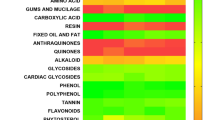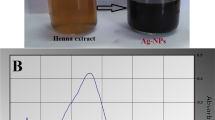Abstract
In this study, the antibacterial activity of essential oil from Chamaecyparis obtusa (Sieb. et Zucc) leaves and twigs was investigated. The test strains were Klebsiella pneumoniae, Listeria monocytogenes, Salmonella typhimurium, Staphylococcus aureus, Escherichia coli, Legionella pneumophila, and Methicilline-resistant Staphylococcus aureus. Antibacterial activity was estimated by measuring bacterial growth inhibition. Histopathological examination was also performed. C. obtusa oil distinctly inhibited the growth of all test strains and exhibited the strongest antibacterial activity against L. monocytogenes. It was chromatographically divided into several fractions. The fractions were further tested against antibacterial activity and their chemical compositions were analyzed. The fraction containing terpinen-4-ol (TA) showed high antibacterial activity toward all strains tested. Tests with authentic samples showed that TA played a major role in the antibacterial activity of C. obtusa oil, and in a mice test, the oil actively minimized inflammation by S. aureus.
Similar content being viewed by others
References
Barel, S., R. Segal, and J. Yashphe. 1991. The antimicrobial activity of the essential oil from Achillea fragrantissima. J. Ethnopharmacol. 33, 187–191.
Chanegriha, N., N. Sabaou, A. Baaliouamer, and B. Meklati. 1994. Activité antibactérienne of antifongique de l’huile essentielle du cypress d’algeric. Rivista Italiana Epposs. 12, 5–12.
Cheng, S.S., M.T. Chua, E.H. Chang, C.G. Huang, W.J. Chen, and S.T. Chang. 2008. Variations in insecticidal activity and chemical compositions of leaf essential oils from Cryptomeria japonica at different ages. Bioresour. Technol. 100, 465–470.
Cheng, S.S., H.Y. Lin, and S.T. Chang. 2005. Chemical composition and antifungal activity of essential oils from different tissues of Japanese cedar (Cryptomeria japonica). J. Agric. Food Chem. 53, 614–619.
Choi, I.G., K.J. Kim, Y.M. Kim, M.J. Park, Y.S. Lee, and D.I. Jeoung. 2006. Fractions of Chamaecyparis obtusa display antiallergic effect in rbl2h3 cells. J. Microbiol. Biotechnol. 16, 1747–1752.
Delaquis, P.J., K. Stanich, B. Girard, and G. Mazza. 2002. Antimicrobial activity of individual and mixed frations of dill, cilantro, coriander and eucalyptus essential oils. Int. J. Food Microbiol. 74, 101–109.
Halcón, L. and K. Milkus. 2004. Staphylococcus aureus and wounds: A review of tea tree oil as a promising antimicrobial. Am. J. Infect. Control. 32, 402–408.
Hong, E.J., K.J. Na, I.G. Choi, K.C. Choi, and E.B. Jeung. 2004. Antibacterial and antifungal effects of essential oils from coniferous trees. Biol. Pharm. Bull. 27, 863–866.
Kil, B.S. 2000. Allelopathic effects of volatile substances from Chamaecyparis obtusa. Korean J. Ecol. 23, 323–329.
Lee, K.K. 1999. Antimicrobial activity of Thuja orientalis and Chamaecyparis obtusa essential oil. J. Kor. Cosmetology 5, 567–577.
Lee, H.O., S.H. Baek, and D.M. Han. 2001. Antimicrobial effects of Chamaecyparis obtusa essential oil. Kor. J. Appl. Microbiol. Biotechnol. 29, 253–257.
Lee, S.S., H.Y. Kang, and I.G. Choi. 2002. Studies on biological activities of woody essential oils (i). Mokchae Konghak 30, 48–55.
Lee, J.H., B.K. Lee, J.H. Kim, S.H. Lee, and S.K. Hong. 2009. Comparison of chemical compositions and antimicrobial activities of essential oils from three conifer trees; Pinus densiflora, Cryptomeria japonica, and Chamaecyparis obtusa. J. Microbiol. Biotechnol. 19, 391–396.
Na, K.J., H.Y. Kang, J.H. Oh, I.G. Choi, Y.W. Yun, and E.B. Jeung. 1998. The sedative effect of stress by essential oils purified from softwoods. Kor. J. Lab. Anim. Sci. 14, 93–96.
Na, K.J., H.Y. Kang, S.K. Yoon, and E.B. Jeung. 1999. Biological efficacy of essential oils from softwood. Kor. J. Lab. Anim. Sci. 15, 79–81.
Oussalah, M., S. Caillet, L. Saucier, and M. Lacroix. 2007. Inhibitory effects of selected plant essential oils on the growth of four pathogenic bacteria: E. coli o157:H7, Salmonella typhimurium, Staphylococcus aureus and Listeria monocytogenes. Food Control. 18, 414–420.
Park, I.K., S.G. Lee, D.H. Choi, J.D. Park, and Y.J. Ahn. 2003. Insecticidal activities of constituents identified in the essential oil from leaves of Chamaecyparis obtusa against Callosobruchus chinensis (l.) and Sitophilus oryzae (l.). J. Stored Prod. Res. 39, 375–384.
Russell, A. 1991. Mechanisms of bacterial resistance to non-antibiotics: Food additives and food and pharmaceutical preservatives. J. Appl. Bacteriol. 71, 191–201.
Yang, J.K., M.S. Choi, W.T. Seo, D.L. Rinker, S.W. Han, G.W. Cheong. 2007. Chemical composition and antimicrobial activity of Chamaecyparis obtusa leaf essential oil. Fitoterapia 78, 149–152.
Author information
Authors and Affiliations
Corresponding author
Rights and permissions
About this article
Cite this article
Park, MJ., Choi, WS., Kang, HY. et al. Inhibitory effect of the essential oil from Chamaecyparis obtusa on the growth of food-borne pathogens. J Microbiol. 48, 496–501 (2010). https://doi.org/10.1007/s12275-010-9327-2
Received:
Accepted:
Published:
Issue Date:
DOI: https://doi.org/10.1007/s12275-010-9327-2




